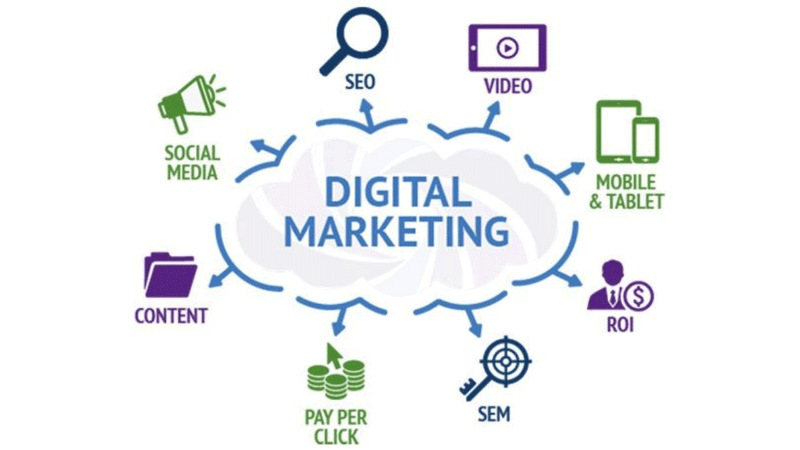Enhance Individual Experience and Drive Traffic With Receptive Website Design
In today's electronic landscape, where individuals are accessing internet sites from a multitude of devices, responsive web design has ended up being more vital than ever before. With its capacity to adjust and perfectly get used to different display sizes, receptive layout not just boosts customer experience yet also drives traffic to your website. However why is this style technique so essential? Just how does it boost customer involvement and increase internet site traffic? In this conversation, we will certainly check out the crucial aspects of effective receptive style, look into the very best techniques for its implementation, and uncover the tricks to boosting user experience while driving even more traffic to your site.
Why Receptive Website Design Matters
Responsive web layout is a necessary aspect of modern-day internet growth because of its ability to guarantee optimum customer experience across various devices and screen dimensions. With the proliferation of smart devices, tablets, and various other smart phones, it has come to be critical for sites to adjust and offer smooth performance regardless of the gadget being made use of.
The main reason receptive website design issues is that it allows individuals to have a consistent and enjoyable searching experience, despite the device they are making use of. A receptive site automatically readjusts its content, style, and format components to fit the display size and resolution of the tool, ensuring that users can conveniently communicate and browse with the site without any kind of aggravation or aggravation.
Moreover, receptive internet design also plays a substantial duty in seo (SEARCH ENGINE OPTIMIZATION) Internet search engine, such as Google, focus on web sites that are responsive and mobile-friendly in their search results. By incorporating receptive layout principles, websites can enhance their visibility and ranking, resulting in raised organic web traffic and prospective clients.

Boosting User Involvement Through Responsive Design
Maximizing individual interaction is a vital goal of responsive style, as it guarantees that individuals can quickly accessibility and interact with site web content on any device. With the boosting use tablets and smart devices, it is important for internet sites to adjust to different screen dimensions and resolutions. Receptive layout enables web sites to instantly adjust their layout and content to offer a smooth customer experience across gadgets.
Among the main methods receptive layout enhances user engagement is by decreasing load times. With a responsive web site, individuals do not have to wait for separate mobile versions to lots, resulting in much faster access to content. This enhanced rate brings about higher individual satisfaction and motivates them to invest even more time on the site.
Furthermore, receptive style improves customer involvement by boosting navigating and interface (The Ad Firm). When a web site is created responsively, food selections and buttons are maximized for touch communications, making it much easier for individuals to browse and engage with the website on their mobile tools. This instinctive and easy to use experience maintains users involved and encourages them to explore more of the site
Moreover, responsive design enables far better web content exposure and readability. By adapting the layout and typeface dimensions to different devices, responsive websites ensure that individuals can easily understand the material and read. This boosts user interaction by lowering the demand for scrolling or zooming to review the message.
Enhancing Website Website Traffic With Responsive Website Design
With the growing appeal of smart phones, having a web site that is receptive to different display dimensions and resolutions is essential for driving enhanced web traffic. In today's electronic landscape, customers are accessing internet sites from a variety of gadgets such as smart devices, tablets, and computer. Each of these tools has different display dimensions and resolutions, and if your web site is not designed to adjust to these variations, it can bring about a poor user experience and a loss of potential website traffic.
Receptive website design makes sure that your web site looks and functions ideally throughout website design work all gadgets. By utilizing flexible grids, liquid images, and media inquiries, responsive style enables your site to automatically adjust its navigation, layout, and web content to fit any display dimension. This indicates that individuals will have a smooth surfing experience no matter whether they are using a big desktop or a tiny smart device computer.
Crucial Element of Reliable Receptive Design
Effective receptive style includes a number of crucial elements that make sure a smooth individual experience across various tools. One of these aspects is flexible grids and layouts. By utilizing loved one devices like percents rather than fixed systems like pixels, developers can produce formats that adapt and scale to fit various screen sizes. This permits content to be shown in a visually attractive and readable fashion on any gadget.
An additional crucial component is media inquiries. These allow developers to apply various styles and designs based upon the attributes of the individual's device, such as screen size and positioning. By using media questions, designers can enhance the discussion of web content for each gadget, making sure that it is readable and quickly available.
Receptive pictures are additionally vital in efficient responsive layout. Photos that are too big can reduce page lots times on mobile phones, while photos that are too small might show up pixelated on larger screens. By utilizing techniques such as responsive photo resizing and lazy loading, developers can ensure that pictures are suitably sized and optimized for each gadget.
Last but not least, effective responsive design includes a mobile-first approach. This suggests creating and focusing on material for mobile tools initially, and afterwards enhancing the design and broadening for larger screens. This strategy makes certain that one of the most essential content is quickly accessible on smaller sized screens, while still giving an abundant experience on larger tools.
Finest Practices for Executing Receptive Website Design
Carrying out responsive internet layout requires mindful consideration of numerous best techniques to make sure an optimal individual experience across various gadgets. When implementing receptive internet design., below are some essential best techniques to follow.
First of all, it is essential to focus on mobile users. With the boosting prominence of mobile phones, making for mobile-first has ended up being important. Begin by designing for smaller displays and after that gradually boost the layout for bigger displays.

Another important ideal technique is to enhance images for different display resolutions. Large images can slow down the loading time of your site, particularly on smart phones with slower connections. Usage responsive images that can be resized based upon the explanation tool's display resolution to improve efficiency.
Additionally, examination your web site on different devices and display sizes to make certain a seamless and regular experience. There are different screening devices offered that can aid you identify any type of concerns and make required changes.
Lastly, prioritize use and ease of access. Make certain that your site is very easy to navigate, with clear and concise content. See to it that your site is obtainable to people with impairments and adheres to access guidelines.
Final Thought
In verdict, responsive web layout plays a crucial duty in boosting customer experience and driving website traffic to internet sites. By advice adopting receptive layout concepts, internet sites can make sure ideal seeing experiences across different gadgets, leading to enhanced customer engagement.
Enhancing individual interaction is a vital goal of receptive layout, as it ensures that individuals can easily accessibility and communicate with site content on any type of device. Receptive style allows web sites to instantly adjust their format and content to supply a smooth user experience across tools.
Additionally, responsive style boosts customer interaction by boosting navigating and user interface.Responsive photos are also critical in effective responsive layout. By adopting responsive layout principles, internet sites can ensure ideal watching experiences across different tools, leading to increased customer involvement.